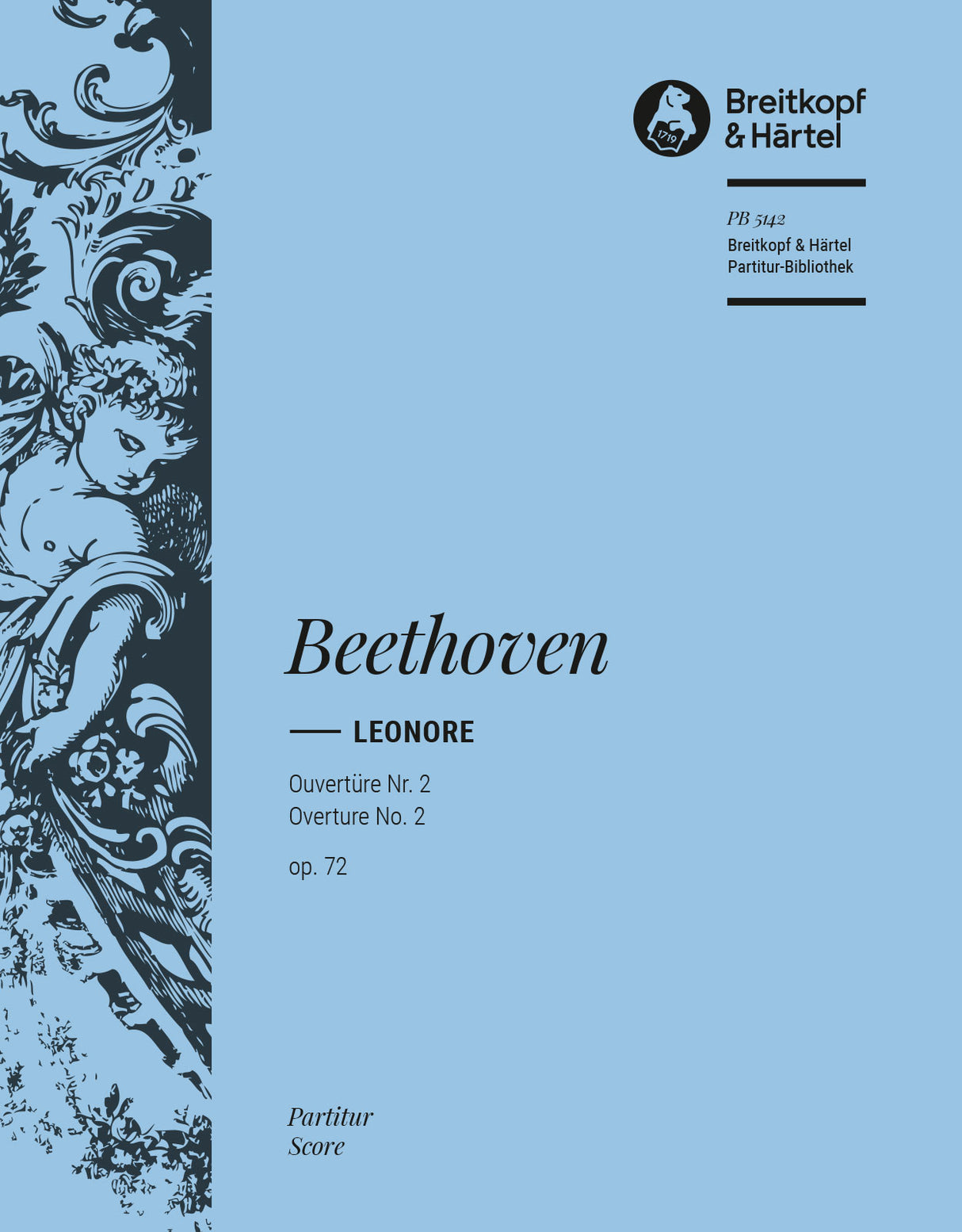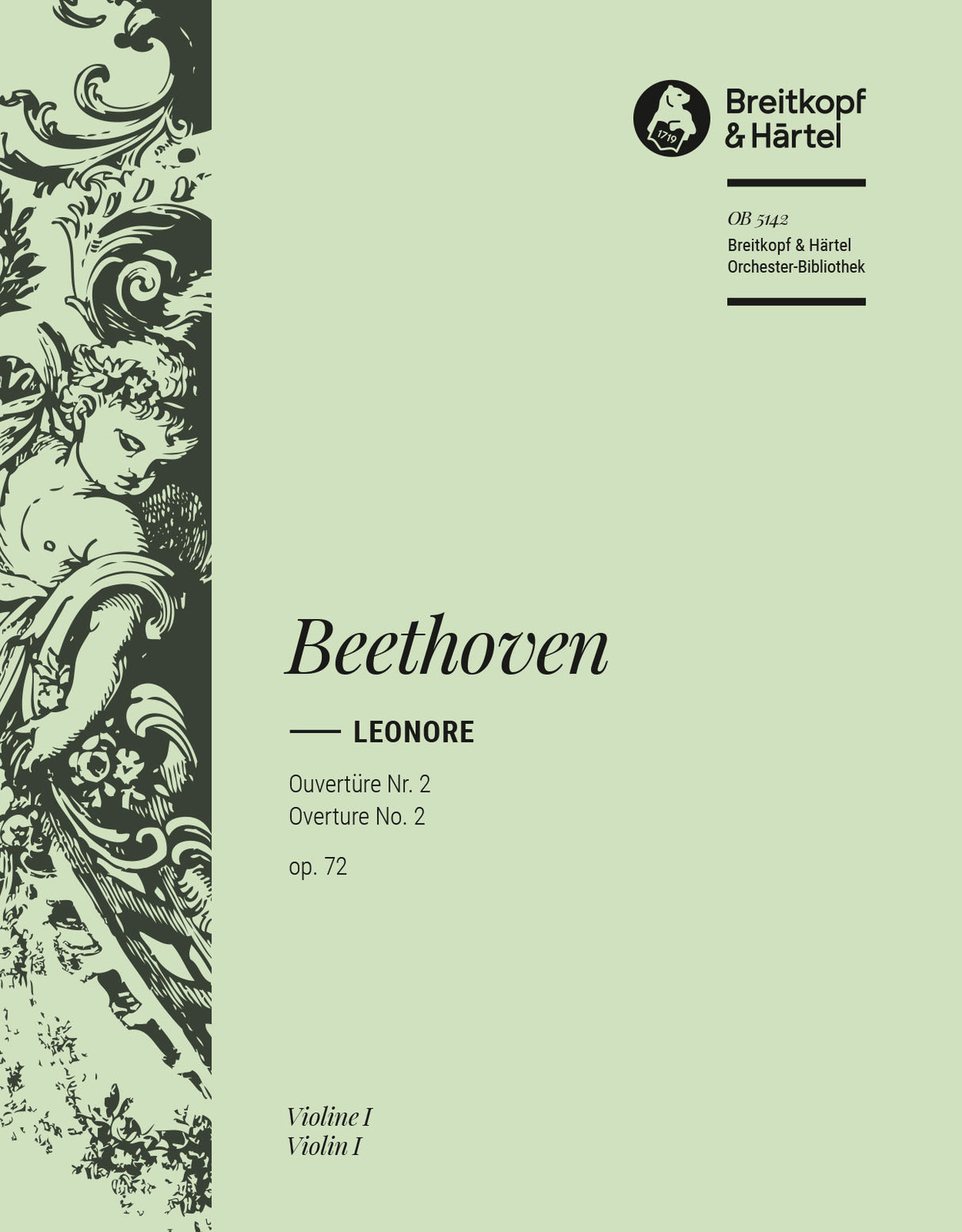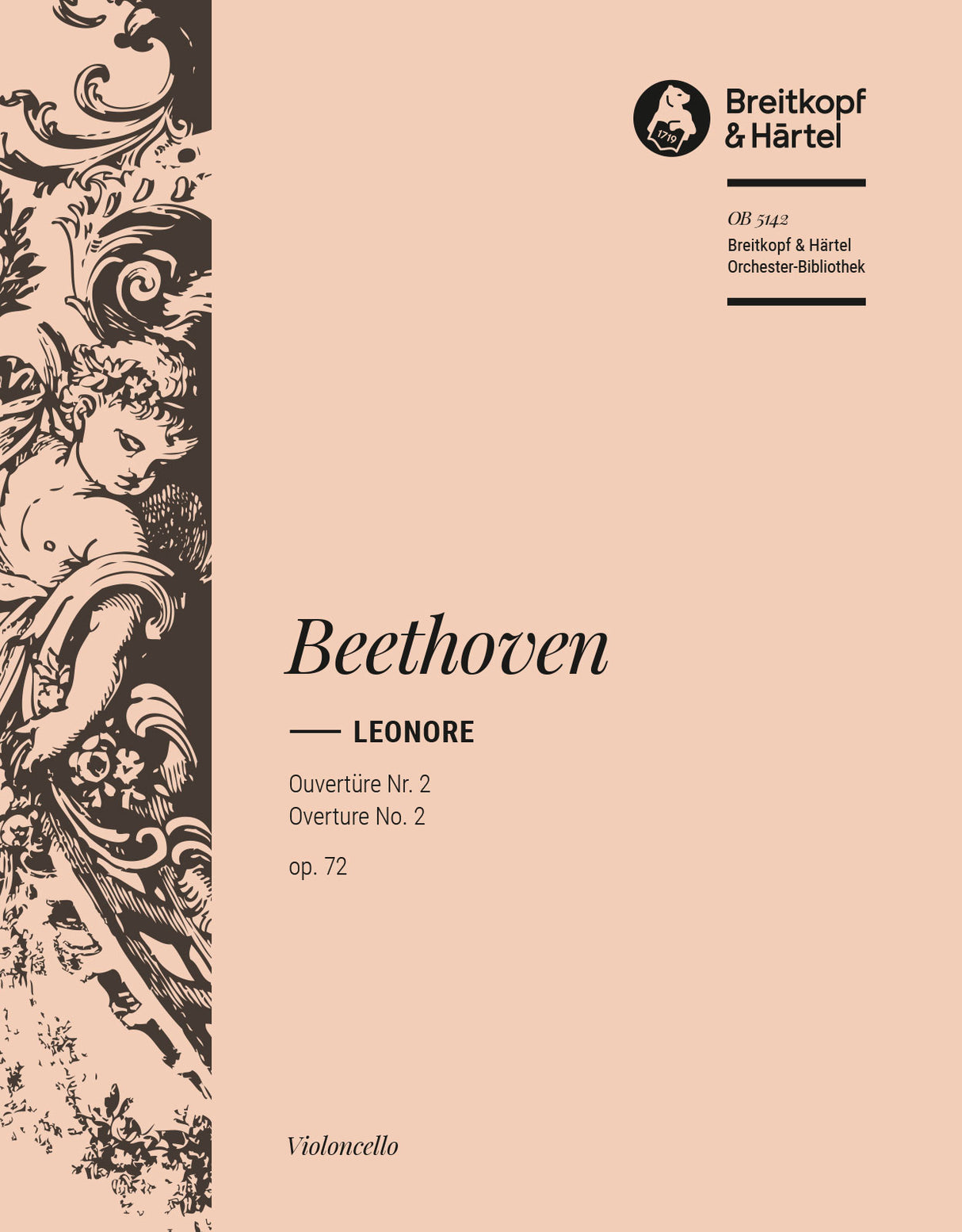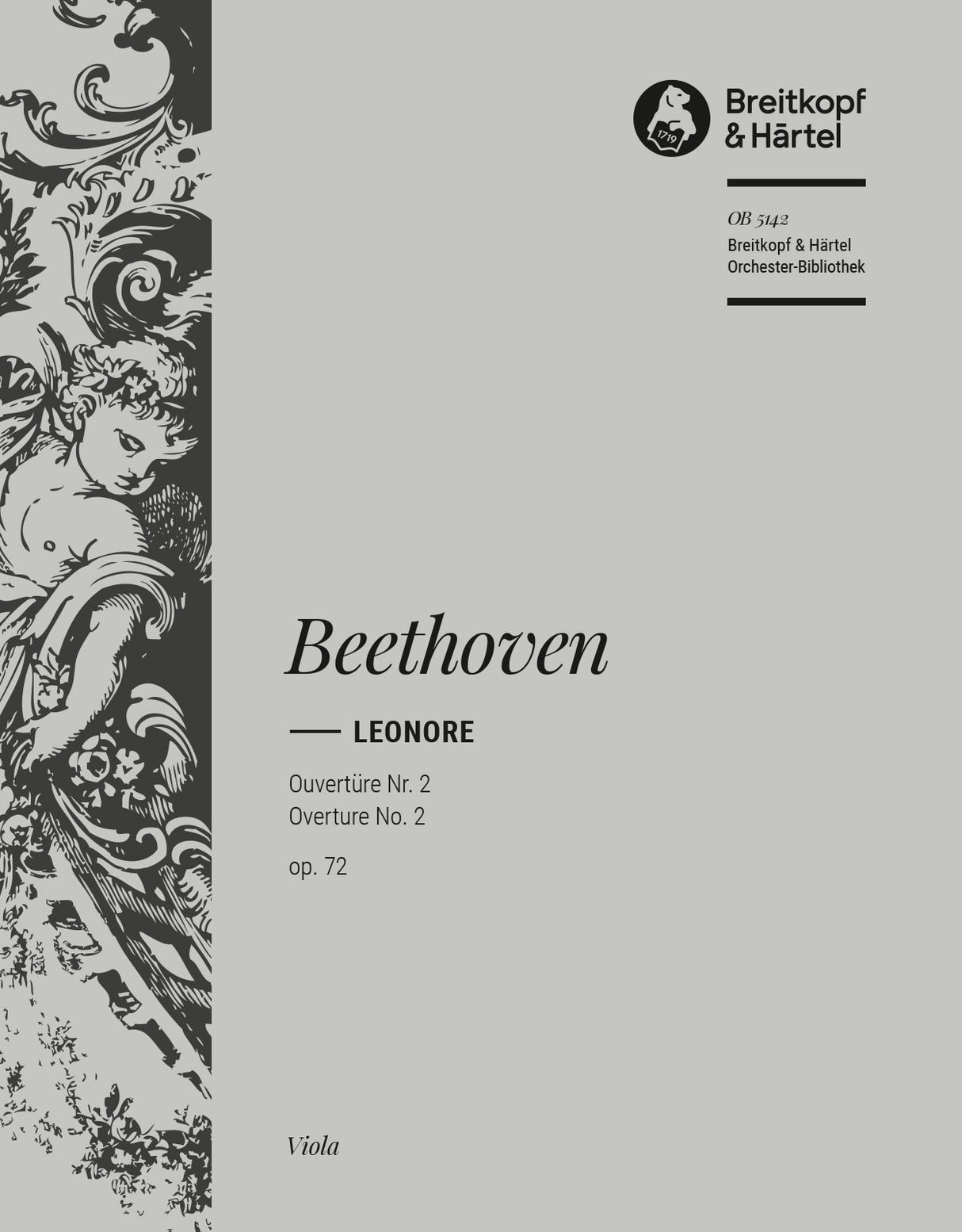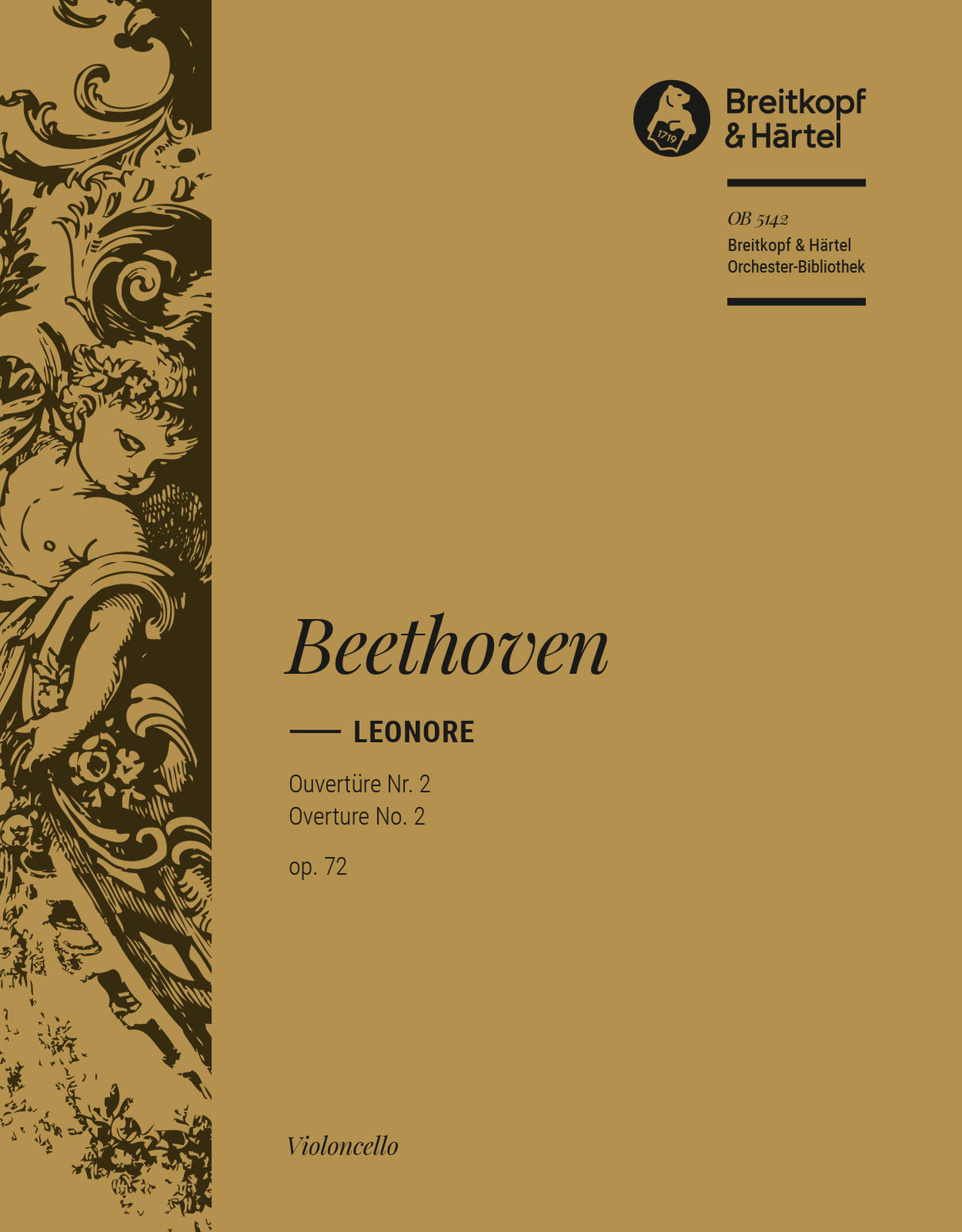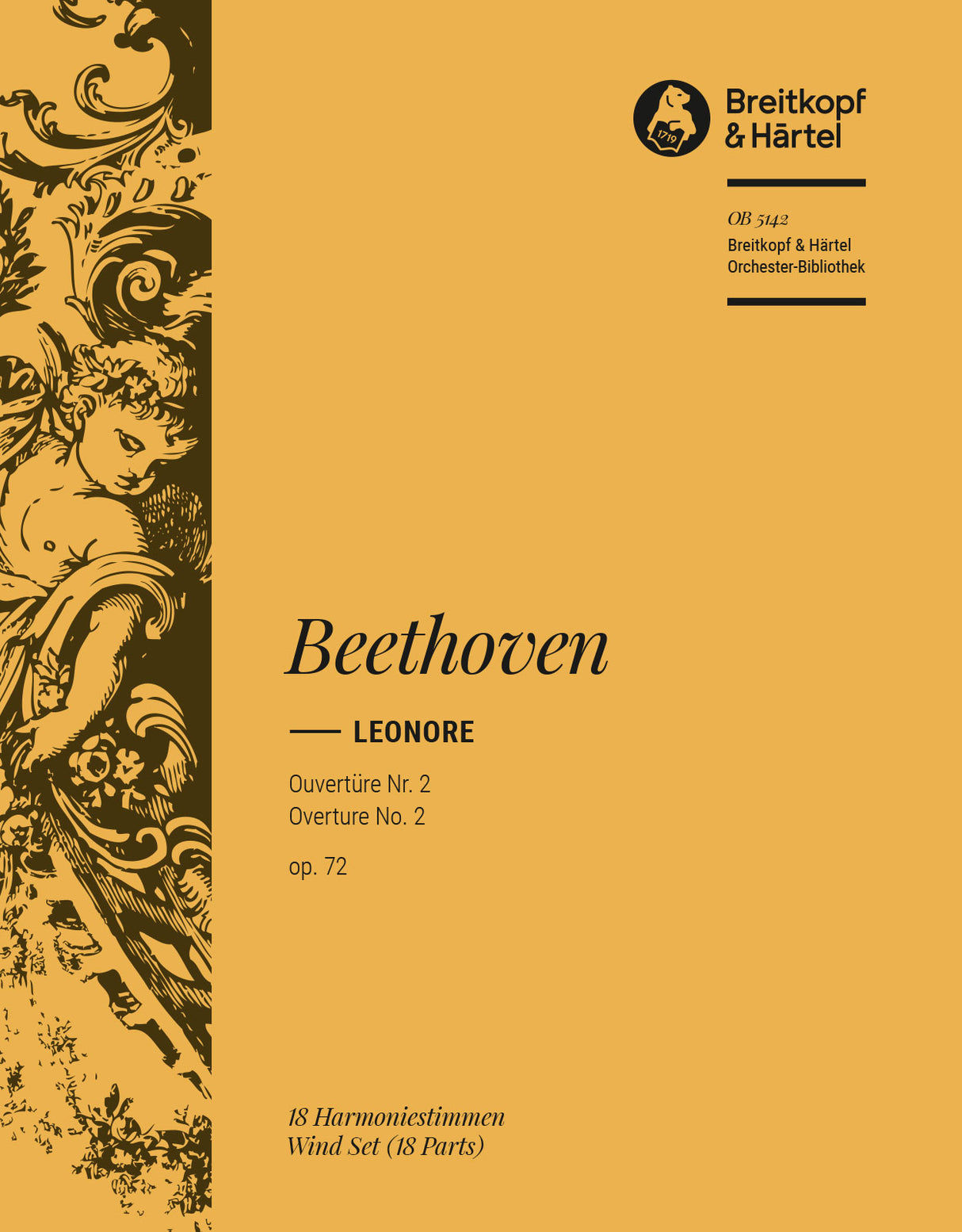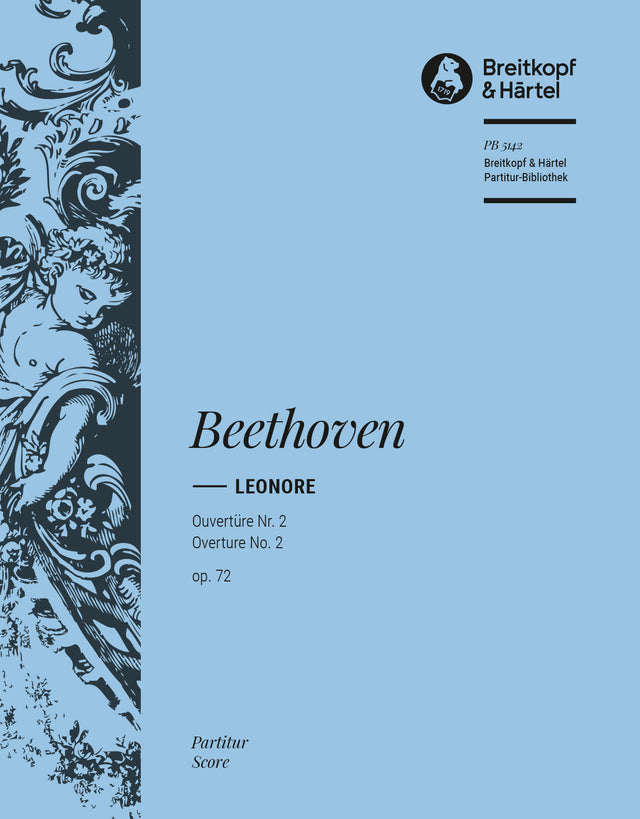Beethoven: Leonore Overture No. 2, Op. 72
Expected to ship in 1-2 weeks.
- Composer: Ludwig van Beethoven (1770-1827)
- Instrumentation (this edition): Orchestra
- Originally for: Opera
- Work: Fidelio, Op. 72
- ISMN:
- Size: 9.8 x 12.6 inches
- Pages: 72
- Urtext / Critical Edition
Description
Despite the numbering, the overture Leonore No. 2 was Beethoven's first effort to precede his only opera with an adequate introduction. It had been composed last minute and in between the rehearsals for the premiere of the opera Leonore oder Der Triumph der ehelichen Liebe (Leonore, or The Triumph of Marital Love) on 20 November 1805 at the Theater an der Wien. This comprehensive, programmatic work was met with incomprehension at first performances just like the opera itself. Beethoven felt compelled to re-write Leonore completely and presented it under its new title "Fidelio". in 1806 he revised the overture to such an extent that a symphonic sonata movement emerged; with another incorrect numbering, Leonore No. 3 has gone down in music history and above all it has achieved a regular place in concert repertory. and in order to complete the confusion: written in 1806/07, only Overture "No. 1" is Beethoven's chronologically last effort to write an overture for Leonore, before he – many years later – put an end to this infinite subject with the so-called Fidelio overture for the third version of the opera. After all, thanks to the search after a dramaturgically convincing beginning of the opera, the music world has been enriched by four quite different orchestra scores. The music text of the present score is based on Volume 11 of the "Supplements to the Complete Edition". The performance material of the Fidelio and Leonore No. 3 overtures is available in "Breitkopf Urtext" editions.
Publishers use a lot of words to describe what they sell, and we know it can be confusing. We've tried to be as clear as possible to make sure you get exactly what you are looking for. Below are descriptions of the terms that we use to describe the various formats that music often comes in.
Choral Score
A score for vocalists that only contains the vocal lines. The instrumental parts are not there for reference. Generally, cheaper than a vocal score and requires multiple copies for purchase.
Facsimile
Reproductions of the original hand-written scores from the composer.
Full Score
For ensemble music, this indicates that the edition contains all parts on a single system (there are not separate parts for each player). In larger ensembles, this is for the conductor.
Hardcover
Hardbound. Generally either linen-covered or half-leather.
Orchestral Parts
Similar to a wind set, this is a collection of parts. In the case of strings, the numbers listed are the number of copies included, though generally these are available individually (often with minimum quantities required).
Paperback
When publishers offer multiple bindings (e.g. hardcover) or study scores, this is the "standard" version. If you're planning to play the music, this is probably what you want.
Performance / Playing Score
A score of the music containing all parts on one system, intended for players to share. There are not separate parts for each player.
Set of Parts
For ensemble music, this indicates that there are separate individual parts for each player.
Solo Part with Piano Reduction
For solo pieces with orchestra, this is a version that contains a piano reduction of the orchestra parts. For piano pieces, two copies are typically needed for performance.
Study Score
A small (think choral size) copy of the complete score meant for studying, and not playing. They make great add-ons when learning concertos and small chamber works.
Vocal Score
A score prepared for vocalists that includes the piano/organ part or a reduction of the instrumental parts.
Wind Set
For orchestral music, this is a collection of wind and percussion parts. The specific quantities of each instrument are notated.
With Audio
In addition to the printed music, the edition contains recordings of the pieces. This may be an included CD, or access to files on the internet.
With / Without Fingering (Markings)
Some publishers prepare two copies - a pure Urtext edition that includes no fingering (or bowing) suggestions and a lightly edited version that includes a minimal number of editorial markings.

